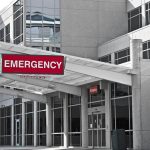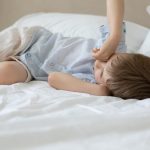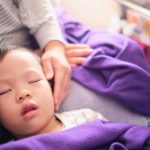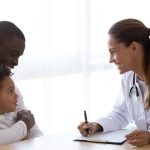By Alyx Arnett
The American Academy of Sleep Medicine (AASM) recently published pediatric-specific guidelines for the multiple sleep latency test (MSLT), a nap study used to measure daytime sleepiness to detect disorders like narcolepsy and idiopathic hypersomnia, tailoring the protocols to address the needs and characteristics of young patients.1
The guidelines were developed by a task force of pediatric sleep disorder experts who reviewed the 2012 practice parameters for children and modified the 2021 adult guidelines.2,3
“Central disorders of hypersomnolence—narcolepsy and idiopathic hypersomnia—typically start in childhood or adolescence, and so it was really critical to develop best practices and standardized protocols specific to that age. There was a gap in adult MSLT guidelines relating to recommendations for children and adolescents based on pediatric data,” says Kiran Maski, MD, first author of the new guidelines, a pediatric neurologist and sleep medicine specialist at Boston Children’s Hospital, and associate professor of neurology at Harvard Medical School.
Key updates to the guidelines include:
- the provision for a minimum of seven hours of sleep, with at least eight hours of polysomnography (PSG) recording time, before the MSLT;
- the use of clinical judgment in determining whether treatments for sleep-disordered breathing should begin before an MSLT;
- and shared decision-making between healthcare providers and patients for children with neurodevelopmental or neurological disorders, younger children, or those with delayed sleep phase.
Minimum of Seven Hours of Sleep
A minimum of seven hours of sleep is recommended before MSLT in children, with an eight-hour PSG recording time versus the adult guidelines, which recommend at least six hours of sleep.
Patients will ideally meet age-specific sleep durations outlined by the AASM. For example, children aged 6 to 12 are recommended to get nine to 12 hours of sleep, while eight to 10 hours is considered healthy in ages 13 to 18.
“Sleep needs for children are different than adults, and the amount of sleep that children need changes across their period of development. So we included not only the recommendation to ensure a minimum amount of sleep but also some information around what is a normal amount of sleep in a child who’s 5, 6, 7, 8, etc,” says John C. Carter, MD, co-author of the guidance, a pediatric neurologist in pulmonary, sleep, and critical care medicine at MetroHealth, and assistant professor at Case Western Reserve University School of Medicine.
Having closer to the age-specific recommended amount of sleep helps ensure “the MSLT is actually demonstrating hypersomnia, not just an appropriate response to lack of sleep,” says W. Christopher Winter, MD, DABSM, DABPN, FAASM, a sleep specialist and neurologist, author of The Rested Child and The Sleep Solution, and host of Sleep Unplugged with Dr. Chris Winter, who was not involved in the development of the guidance.
However, Winter also emphasizes the importance of clinical judgment. He highlights that the MSLT is just one diagnostic tool and should be considered in the context of the patient’s overall history.
For instance, if a patient presents with clear symptoms of narcolepsy but doesn’t achieve seven hours of sleep, Winter says, “It doesn’t really change that much how I feel about the situation….I’m not throwing the baby out with the bathwater.”
Should Sleep-Disordered Breathing Be Treated?
Sleep specialists are now recommended to use clinical judgment in deciding whether to treat sleep-disordered breathing in pediatric patients before testing—differing from the adult recommendation to require treatment.
Reasons for this change include that the threshold is much lower for a diagnosis of obstructive sleep apnea (OSA) in children (an apnea-hypopnea index [AHI] of 1, compared to 5 for adults) and that side effects present differently. “This is where you wear the pediatric hat and think about what kids are sleepy due to sleep apnea,” says Louella B. Amos, MD, co-author of the guidance, a pediatric pulmonologist and sleep medicine specialist at Children’s Wisconsin and associate professor of pediatrics in the Division of Pulmonary and Sleep Medicine at Medical College of Wisconsin.
Amos points out that children with mild OSA are usually not very sleepy. “They’re more hyper. They’re a little bit more stimulated. They have behavior issues, but they don’t fall asleep in school necessarily,” she says. “We have to use our judgment knowing that an AHI of 1 or 2 is probably not causing them to sleep 16 hours a day.”
A study seeking to determine objective sleepiness in pediatric OSA patients found that only seven of 54 patients had mean sleep latencies of under 10 minutes. All seven of those patients had AHIs of over 10.4
For children with more severe OSA, Amos suggests considering treatment first. “We may have to say, ‘We should really treat this before we put anyone through this 24-hour test and make sure we address this before we label them with a central sleep disorder of hypersomnolence,’” she says.
Another reason for the updated guidance is that treatments for pediatric sleep apnea patients often differ from those for adults. “Far fewer kids use CPAP,” says Carter. Maski adds, “We could delay a diagnosis of narcolepsy by requiring a patient to habituate and use CPAP or go for a surgery to treat mild OSA before conducting a diagnostic MSLT.”
Shared Decision-Making in Special Populations
Additionally, sleep specialists are encouraged to use shared decision-making with parents regarding modifying protocols for patients with neurodevelopmental disorders, neurological disorders, young age, and delayed sleep phase.
Secondary narcolepsy can occur in various neurological conditions (for example, Prader-Willi syndrome, Niemann–Pick type C disease, and other rare genetic conditions can have hypersomnia and cataplexy, explains Maski), making hypersomnia difficult to assess when patients may have cognitive, behavioral, or psychiatric difficulties adhering to strict MSLT protocols.
Sleep specialists are encouraged to talk with the patient’s parent regarding the feasibility of the study and potential modifications. “Setup is going to be a big issue sometimes because they don’t know what’s going on, or they may be very combative. We have to think about what will be needed to safely perform this test,” says Amos. “Parents—that’s one thing different between adults and pediatrics. There’s a parent involved, and they know their child. So if you can’t even get vitals on a child without them creating a security issue, you might have to rethink how you’re going to go about this test—or if you’re even going to do it.”
Modifications may include offering sleep lab tours beforehand, encouraging parents to explain the protocols to their child, having patients apply sample sensors at home, minimizing monitoring equipment, or allowing the parent to stay in the room during the study.
Additionally, it’s recommended to have the patient stop medications with “alerting, sedating, and/or REM-modulating properties” at least two weeks before the MSLT. Medications such as selective serotonin reuptake inhibitors and serotonin–norepinephrine reuptake inhibitors—used to treat mood disorders, which are common in patients with central disorders of hypersomnolence—are known to suppress REM sleep, so tapering these drugs should be considered.1
Drug screenings are recommended to ensure adherence to the medication instruction plan and, when indicated, to ensure that the MSLT results “are not confounded by inadvertent, intentional, or illicit medication or substance use.”1
Future Research Directions
In developing the new guidance, the task force identified several areas for further research. One area that’s critical, according to Maski, is validating other sleep-wake tracking devices beyond actigraphy to ensure sleep specialists know how much sleep patients are getting in the real world and help rule out other conditions, like insufficient sleep or circadian rhythm disorders.
“We’re highly reliant on the actigraph right now, but it’s a limited resource, it’s costly, it’s not reimbursed, and it’s difficult to integrate into clinical workflows,” says Maski. So I think other objective measures that could be validated would be of great utility in this field.”
Investigating At-Home EEG for Narcolepsy and IH
The guidance also emphasizes the need to identify and validate alternative testing methods that are easier to administer to children and adolescents and better assess patient symptoms than the PSG-MSLT.
Jacob Donoghue, MD, PhD, CEO and co-founder of Beacon Biosignals, a computational neurodiagnostic and electroencephalogram (EEG) analytics company, says at-home sleep EEG monitoring is the most promising alternative to in-lab PSG-MSLT. “This form of monitoring is poised to capture the current gold standard of early REM periods but could also be used to characterize more subtle—and currently investigational—features of narcolepsy to improve diagnostic sensitivity without sacrificing specificity,” he says.
With validation studies, including those being conducted by Beacon, Donoghue believes new paradigms will emerge that could replace the MSLT in the future.
Beacon is currently conducting a clinical trial to validate the utility of its at-home Dreem 3S dry EEG electrode headband for the diagnosis and evaluation of disorders of excessive sleepiness, specifically narcolepsy type 1. “Accurate and automated EEG-based sleep staging could markedly improve the yield of MSLT testing by identifying those subjects who are most likely to have narcolepsy—but still need MSLT testing, eliminating the need for testing those who obviously do or do not have narcolepsy,” Donoghue says.
Margaret S. Blattner, MD, PhD, a neurologist-sleep specialist at Beth Israel Deaconess Medical Center, is conducting research that could potentially improve the diagnosis of idiopathic hypersomnia. In adults with prolonged sleep duration, an area “where the MSLT is historically limited,” she is using a combination of at-home actigraphy and partial EEG to monitor sleep stages.
Blattner explains that the MSLT primarily measures a person’s propensity to fall asleep and inability to stay awake, but in cases of idiopathic hypersomnia, some patients have more difficulty waking up than falling asleep. “In these cases, the in-lab MSLT often, very often, doesn’t capture sleepiness. It looks like a normal test, or a marginal test, even though people have very real sleep problems,” she says.
She highlights the importance of collecting more nuanced data to help differentiate sleep disorders. “Trying to use additional or alternative protocols is an avenue of great interest, especially in people who have unusual sleep disorders or sleep symptoms or people who have additional considerations, and one of those considerations is age. Just how appropriate is it to have a child in this anxiety-provoking or unfamiliar environment?” Blattner says.
Looking Ahead
Carter believes the new guidance will be helpful for sleep techs moving forward. “This is something that we’ve heard time and time again, talking to our colleagues at other institutions and our own institutions, is they were really interested in having a very clear direction on what do we do—A, B, C—for performing these tests in kids,” he says.
So the guidance includes several checklists: one for the ordering provider, one for the night and day of testing for the sleep tech, and one for preparing the report. “We want to make this as painless and streamlined as possible. So how we have it outlined in those checklists is the best way to ensure a good result,” Carter says.
Laura A. Linley, CRT, RPSGT, FAAST, executive vice president of operations at Advanced Sleep Management, says the guidance has been “quite helpful, particularly regarding minimal sleep duration requirements before the MSLT and the evaluation of medication and substance use, which can vary significantly with patient age.” Her company’s sleep centers already have implemented a site-specific workflow for drug screening on the day of MSLT testing.
Sarah Akerman, MD, executive director, therapy area head, neuroscience at Jazz Pharmaceuticals—maker of Xywav, approved to treat cataplexy and/or excessive daytime sleepiness in narcolepsy patients age 7 and older and idiopathic hypersomnia in adults, and Xyrem, approved to treat cataplexy and/or excessive daytime sleepiness in patients age 7 and older with narcolepsy—emphasizes that accurate, objective diagnostic tools like the MSLT are essential for patient assessment.
“We have come to understand the importance of providing solutions that address patients’ lives holistically, especially for those living with complex sleep disorders like narcolepsy. That is why we believe that accurate diagnostic tools are an integral part of narcolepsy patient care so that they receive a proper diagnosis and ultimately receive the proper treatment to manage their condition,” says Akerman.
References
- Maski KP, Amos LB, Carter JC, et al. Recommended protocols for the Multiple Sleep Latency Test and Maintenance of Wakefulness Test in children: guidance from the American Academy of Sleep Medicine. J Clin Sleep Med. 2024;20(4):631-41.
- Aurora RN, Lamm CI, Zak RS, et al. Practice parameters for the non-respiratory indications for polysomnography and multiple sleep latency testing for children. Sleep. 2012 Nov 1;35(11):1467-73.
- Krahn LE, Arand DL, Avidan AY, et al. Recommended protocols for the Multiple Sleep Latency Test and Maintenance of Wakefulness Test in adults: guidance from the American Academy of Sleep Medicine [published correction appears in J Clin Sleep Med. 2022 Aug 1;18(8):2089]. J Clin Sleep Med. 2021;17(12):2489-98.
- Gozal D, Wang M, Pope DW. Objective sleepiness measures in pediatric obstructive sleep apnea. Pediatrics. 2001;108(3):693-7.
- Carskadon MA, Wolfson AR, Acebo C, et al. Adolescent sleep patterns, circadian timing, and sleepiness at a transition to early school days. Sleep. 1998;21(8):871-81.
ID 115717637 © Jetsam86 | Dreamstime.com




Leave a Reply